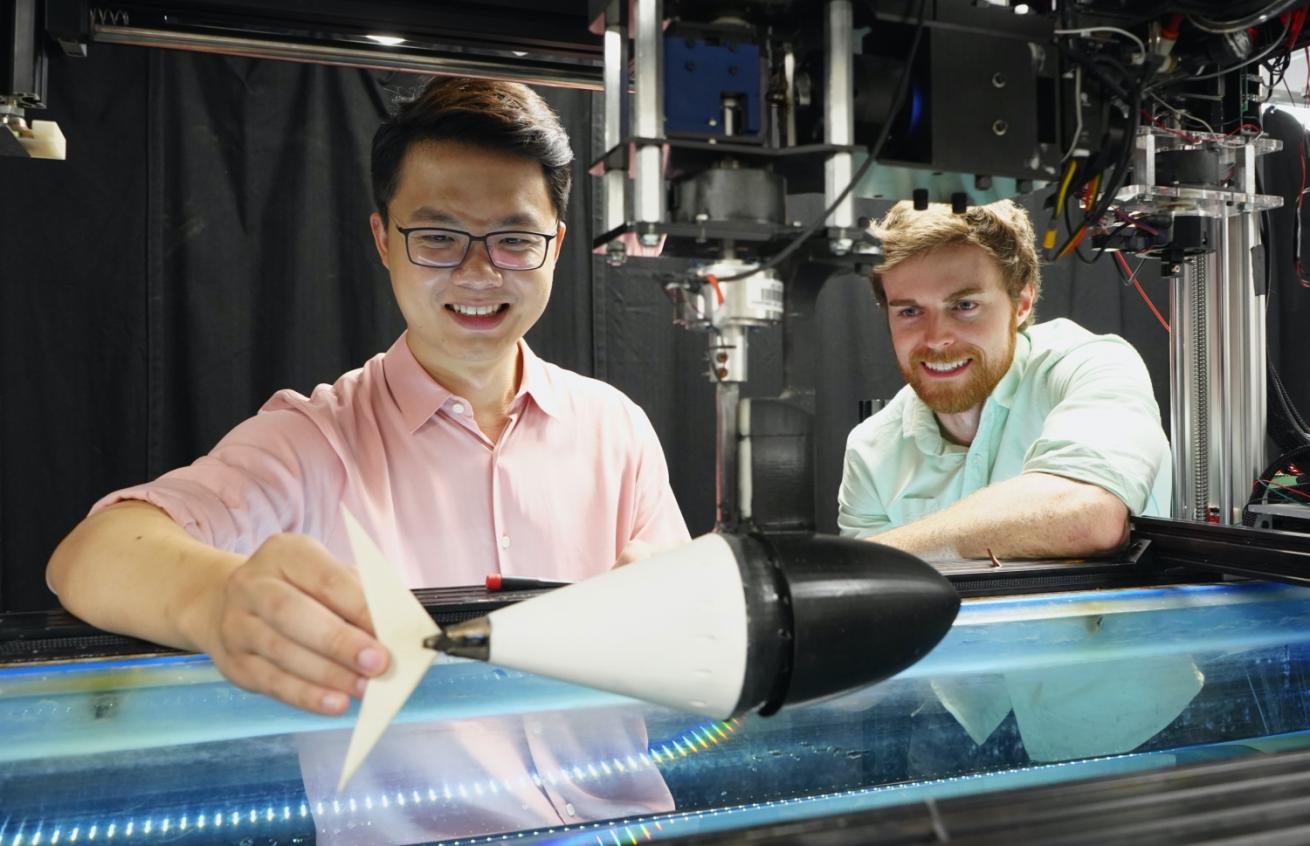Tuna-Like Robot Could Improve Your Underwater Drone

University of VirginiaPostdoctoral researcher Qiang Zhong, left, and Assistant professor Dan Quinn stand with their tuna-like robot.
While underwater robots are nothing new, developers have yet to successfully design one that can move with the effortless speed and serenity as an actual fish — until now.
A team of researchers from the University of Virginia has nailed down a formula that models how fish swim faster or slower by altering the rigidity of their tails. It’s allowed them to design a robot with a specialized tail that works nearly as well as a real fish slowing down or speeding up in the water.
While this phenomenon has proved difficult to figure out in the past (it’s tricky to measure while a fish swims), the researchers used fluid dynamics and biomechanics to figure out their formula.
Researchers built a tuna-like robot and applied the formula, finding that the faux fish could swim over a wider range of speeds while using only about half the energy as a robot with a fixed tail.
"Having one tail stiffness is like having one gear ratio on a bike," Dan Quinn, one of the co-authors of the study, tells Big Think. "You'd only be efficient at one speed. It would be like biking through San Francisco with a fixed-gear bike; you'd be exhausted after just a few blocks."
With the technology figured out, the team at the University of Virginia plans to scale the project and implement the formula on robots of different sizes.
The team is also working on a mechanism that would allow for a robot to undulate like a stingray.
“I don't think we'll run out of projects any time soon,” Quinn says. “Every aquatic animal we've looked at has given us new ideas about how to build better swimming robots. And there are plenty more fish in the sea.”










